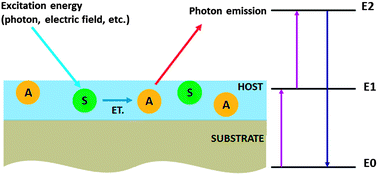One type of commonly used luminescent material is so-called metal-ion doped phosphor. In such materials, optical and luminescent characteristics may be controlled by the host and metal-ion dopants (lanthanide and transition metal) of the phosphor. Many metal-ion doped luminescent materials can be made in the form of thin films. This feature article briefly reviews the development in the basic design rules of such materials, synthetic approaches (physical vapour deposition and chemical methods), and fabrication processes of metal-ion doped thin-film phosphors. We provide an overview of various techniques used for the structural characterization of metal-ion doped thin-film phosphors. Metal-ion doped luminescent thin films are attracting widespread interest in the optoelectronics field, ranging from flat-panel displays, solid-state lighting, optical waveguides, solar cells, and multifunctional applications. A critical issue for these applications is enhancing luminescence efficiency by considering the specific configuration of thin-film structure differing from the corresponding bulk material. Hence, the factors affecting luminescent properties of thin-film phosphors are identified. Some strategies in improving the performances of thin-film luminescent devices are discussed. Finally, the state of the art in some emerging fields is reviewed and future directions are indicated.

You have access to this article
 Please wait while we load your content...
Something went wrong. Try again?
Please wait while we load your content...
Something went wrong. Try again?


 Please wait while we load your content...
Please wait while we load your content...